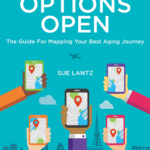By Akaisha Kaderli, RetireEarlyLifestyle.com
Special to the Financial Independence Hub
“Improvise, Adapt, and Overcome” – Marine slogan
What a year!
We have heard from friends and family how happy they are to see the year 2020 in their rearview mirror. Can’t argue with that. Yet, in my opinion, 2020 brought us great lessons, from which we can benefit.
Solid plans often break
Often our Readers will say they have just a few more things to settle, a few more “I’s” to dot and “T’s” to cross before retiring. They’re waiting for the health care issue to be settled, waiting for the bonus check next year, waiting to hit “this” particular financial number, waiting for next year to sell their properties … they’re waiting …
Personal Financial Independence was put off until this imaginary perfect time, and then finally, for 2020 they planned a year of travel. But BAM! COVID broke out or, in some cases, one of the spouses became gravely ill with a disease and that not only shook them up but forced them to shelve all excursion plans.
Ask yourself, “What are you waiting for and why?” Then ask yourself if you have a Plan B for these unexpected situations.
Lots of people wait until they graduate from law school or get the degree or wait until they get married, or until they buy that perfect house, or until they hit that magic number to retire: in order to be happy.
They live for tomorrow and forget all about the pleasures and happiness of today.
Stop settling, start living. NOW.
You’re not going to get anything in Life by playing it safe. There are no guarantees.
Lesson learned: Faith over Fear, Don’t Worry be Happy
We only have control of ourselves.
I get push back on this one, sometimes. Usually it falls under the “You don’t understand” category.
But if you think about it, stuff happens.
We can’t control a loved one getting ill, can’t control that our children or spouse don’t do what we prefer. We don’t have a lot of say in international peace relations. Whether our children get divorced, COVID breaks out, there’s a huge business loss or politics don’t go our way – all we have control over – is our response to the situation.
If you are feeling out of control on your moods, get help. There are lots of tools to clarify your mind and calm yourself down and lots of services available to you. Don’t let the stress build up until you have an even worse situation happen.
Lesson Learned; Life is not in our total control: only our response to it is.
Relationships change
Relationships were cemented or lost this year. Yeah, this was a big one.
Once again if you think about it, when you got married, had a child, moved cross-country, got that promotion, contracted a serious illness, got divorced, retired early or hit any other life milestone, did some friendships recede?
Most likely.
Life is change and sometimes your better future lies ahead of you, without those loved people in them.
Yes, it IS difficult to let go of habits and people. We’ve all been there at different points in our lives. It’s better to process the loss and continue to move forward, creating the life of our dreams, than to become bitter and angry over the loss.
In my opinion, 2020 was a year of clarification.
What I mean is, yup. Things fall away. Sometimes beloved things and people. I think this helps us to focus on what really matters to us. This is a blessing in disguise and you will be stronger for it.
Lesson Learned; As you grow, some relationships won’t make it into your future.
Fear seemed ever-present
When we are afraid of something, chances are, we don’t know much about it. Our perceptions are skewed because of this.
Remember the old saying: FEAR is False Evidence Appearing Real?
Take control and choose to find out more. The knowledge you discover will give you options and open up doors for you. Question the thoughts you are thinking and the beliefs you are holding. Fear does not serve you in any way and will only force you to contract, limiting your options even further.
This is a choice. Continue Reading…







